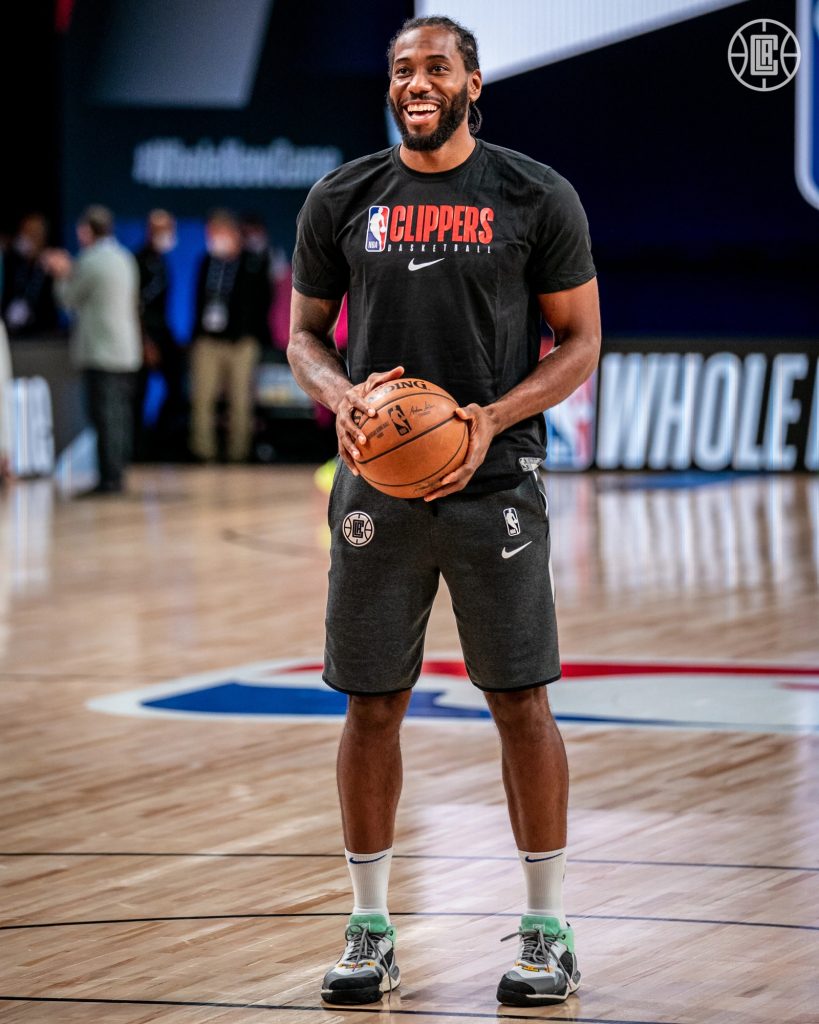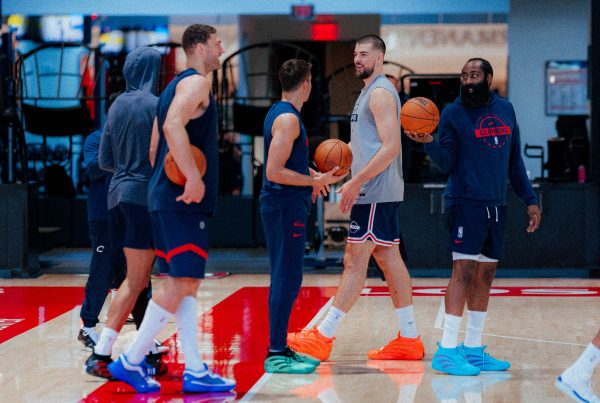The Question
The Clippers are a top 3 offense in the NBA, but unlike the other top offenses in the league, their offense doesn’t take the modern approach of emphasizing 3-pointers and layups while cutting out mid-range shots. The Clippers embrace mid-range shots, but there’s a good reason those other teams shy away from those very same looks. So, the question rattling around my head is: will the Clippers’ offense still be effective in the playoffs, or is it doomed to fail?
A Refreshing Offense
We’ve been down this road before, watching Clippers offenses that fail to maintain their momentum in the playoffs. During the Lob City era, we saw a calculated offense that ran through Chris Paul in the pick-and-roll, Blake Griffin facing-up on the block, DeAndre Jordan setting screens and rim-rolling, and JJ Redick running routes off-ball. While the offense was almost always ranked in the top 10, it became too predictable in the post-season, as we saw the league’s best defenses turn a potent offense into a seemingly average one—frustrating, to say the least.
The 2019-20 Clippers offense feels completely different. Sure, various players have their spots they like to get to, but there are so many different weapons and variations on how they score. The Clippers have a deep, deep bag to pull from: Kawhi Leonard fading away, Lou Williams left-fading jumper, Paul George running Curry-like routes off-ball, Patrick Beverley spotting up, Montrezl Harrell facing up on the block, Lou and Trezz pick-and-roll with JaMychal Green rotating on the perimeter, Kawhi and Ivica Zubac pick-and-roll, Kawhi’s jab-to-step-back-3, Marcus Morris Sr. finding and abusing mismatches, Pat Bev floaters, Reggie Jackson lane probing… you get the idea.
With varying points of attack, the offense is less predictable, more improvised, and more difficult for defenses to adapt to. All good things. However, resting comfortably in the Clippers’ offense are a healthy amount of mid-range shots. Is that a problem?
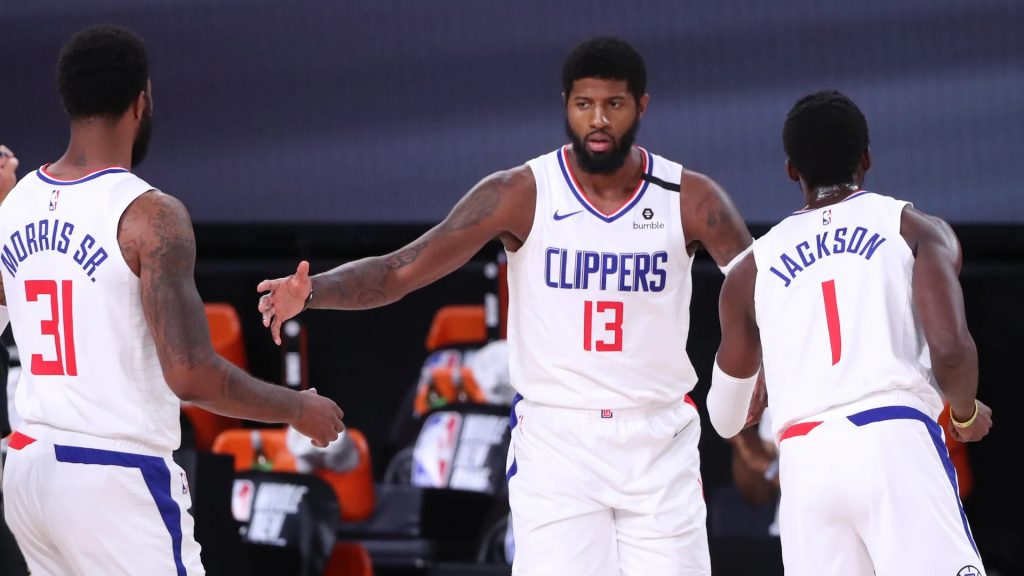
The Mid-range and “Moreyball”
Before I start, one note: for the purposes of this article, the “mid-range” is defined as any 2-pointer that’s not within the restricted area under the rim. Across the league those paint shots outside of the restricted area are just as inefficient as the longer 2-pointers, when compared to shots in the restricted circle. Stats.NBA.com separates them for some reason, but I really see no point.
So you’ve probably heard (ad nauseam) that mid-range shots are bad. But if you haven’t, I’ll break it down: the most basic version of the concept is that you can make 33% of your 3-pointers, and it’s the equivalent of making 50% of your 2-pointers. The league average efficiency for mid-range 2-pointers is 40%, versus 63% for shots at the rim and 35% for 3-pointers. So it seems like a no-brainer to stick to layups and 3-pointers, right? That, and free-throws when you can get them, but those aren’t exactly something a team can control (though some players make a concerted effort).
The Rockets are certainly believers, hence the term “Moreyball,” named for Rockets GM Daryl Morey, that’s often been used to describe this offensive approach. The Rockets shoot by far the fewest mid-range shots in the league at 15.5 per game (most of which are from Russell Westbrook), with the second fewest being the Nets all the way up at 19.1. The Rockets are 8th in shots at the rim, and as you’d expect they lead the league in 3-point attempts at over 44.
The NBA’s Other Top Offenses
It’s not just the Rockets that avoid the mid-range. The Mavericks too subscribe to this concept, currently 2nd in 3-point attempts, but 22nd in mid-range attempts. Curiously, though, the Mavericks are 29th in shots at the rim, and yet they still boast the best Offensive Rating in NBA history (115.8). But this is driven mostly by their 3-point shots, which they shoot far more efficiently than the Rockets.
The Lakers, on the other hand, focus on shots at the rim. They’re 3rd in rim attempts, but their league-leading rim efficiency (69.2%) vastly outshines the two teams ahead of them in attempts—they’re truly the kings of the restricted area, and it’s almost singlehandedly carried them to the 4th ranked offense. From long-range, the Lakers are 23rd in attempts. From the mid-range, they’re 18th in attempts, but that comes mostly from Anthony Davis’ 7.5 attempts at 38.7% efficiency and from LeBron James’ 4.9 attempts at 36.7% (wow) efficiency.
[Note to Doc: Force LeBron to shoot mid-range jumpers.]
The Bucks are a mix of both. They’re rim specialists with the 2nd highest efficiency in the restricted area (67%), but they also shoot the 4th most threes per game. From mid-range, the Bucks are 23rd in attempts, but they’re actually 4th in efficiency. This is mostly thanks to Khris Middleton being an absolute sniper, with 7.4 attempts at 51.4%(!!!) efficiency.
Beyond 1 or 2 players on each team, none of these top-ranked offenses really rely on mid-range shots, even when they’re good at them. It’s just not part of their game plan.
The Clippers’ Offense
The Clippers are a different story. As a team, they’re not really specialists in any one area, but rather they’re in the middle-of-the-pack in every category. At the rim, they’re 18th in attempts and 15th in efficiency. From 3-point-range, they’re 16th in attempts and 10th in efficiency. And from mid-range, they’re 12th in attempts and 13th in efficiency.
Now, that last sentence might be confusing—but let me be clear: even though the Clippers aren’t ranked near the top of the league in mid-range shot attempts, the mid-range still features heavily in their offense. No team has as many key players with the mid-range built into their game. The Clippers are the only team in the league with four players shooting five or more mid-range shots per game. So it’s safe to say that while the mid-range doesn’t define the Clippers’ offense, it’s clearly important to multiple key Clippers that drive the offense. And on the whole they still shoot far more mid-range shots than any of the other top offensive teams.
So based on everything we’ve covered so far, the Clippers’ need for mid-range success should be bad news, right? Well, not quite.
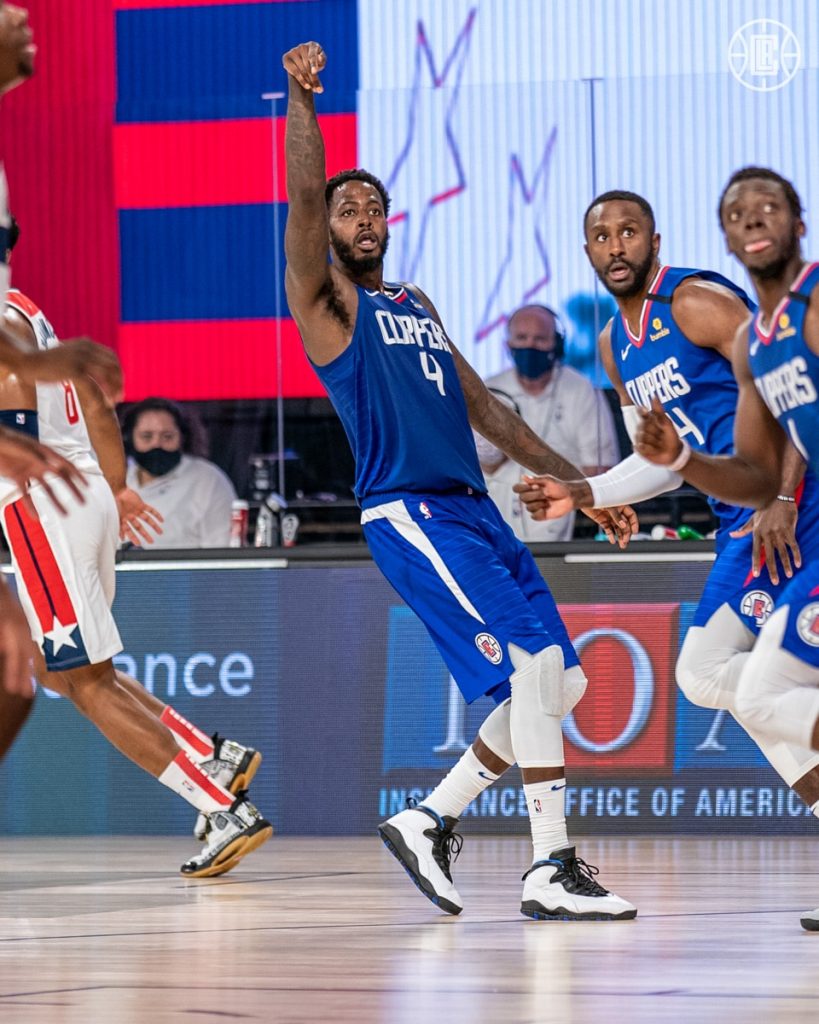
A Problem with “Moreyball”
First, let’s not get things twisted: the “Moreyball” model isn’t wrong. It’s almost always right, and it’s changed the face of the NBA. There’s a reason that NBA teams are scoring more as more teams adopt this model. Teams are averaging over 10 points more per game than in 2015, when the Warriors first won a championship using a similar model.
But as defenses have begun to adjust to defending these types of offenses, they’ve exposed some of the cracks in its logic. By sticking to the system so religiously and refusing to take mid-range shots, teams can become predictable as defenses can focus their efforts on running shooters off the arc and contesting at the rim. This becomes even more true during the playoffs. When comparing the 2019 playoffs to the 2018-19 season, teams had fewer attempts and decreased efficiency in both the restricted area and 3-point range, while having increased attempts from the mid-range.
Knowing this, it’s not surprising that the 2018-19 Warriors took the 2nd most mid-range shots in the league, and the 2017-18 Warriors took the 7th most mid-range shots. As Kevin Durant once debated with sports analyst Matt Moore on Twitter, the mid-range shots helped open up the Warriors’ offense in response to those adapting defenses. Matt responded that those shots only make sense if you can actually make them at an efficient rate. Both points are correct.
Other Important Factors
Location of shots is hardly the only consideration when it comes to an NBA team’s offensive aspirations in the post-season. As Steve Kerr noted last year, the Warriors had to adapt their 2015 offense in a number of ways to remain relevant and stay ahead of defenses, particularly in the playoffs when offensive schemes tend not to go as planned. In the modern NBA, having a deep bag of tricks is essential to making an offense sustain through the grind of the playoffs.
You need players who can score in isolation or pick-and-roll situations, when the more complex action can’t be achieved. You need players who can score from every part of the floor to keep defenses guessing and to be able to find the chink in a defense’s armor, wherever that may be. You need players who can score in clutch situations with the game on the line. Ultimately, you need a team that’s comfortable in any situation the game throws at them.
Fortunately for the 2019-20 Clippers, they already have many of these attributes on the roster. Kawhi Leonard is one of the most efficient iso players in the league, scoring 1.07 points per possession (PPP) in such situations. He’s also their leading mid-range scorer, drilling 46% of his mid-range shots this season (and that was after a cold start—he’s bumped that up to 55% after the All Star break). Paul George and Kawhi are some of the better pick-and-roll ball-handlers in the league, at 0.95 and 0.97 PPP respectively. Trezz and Kawhi are near the top of the league in post-up PPP at 0.98 apiece. Paul George has the 2nd highest PPP in the league for players coming off of a screen at 1.13. The Clippers have a top-5 FG% and 3P% in clutch situations as well. And, when they space the floor, they can absolutely make it rain from three-point land.
Lawrence Frank and Jerry West purposefully and strategically built the Clippers to deal with a wide range of obstacles for a reason, which is the point of all this. That’s the modern NBA.
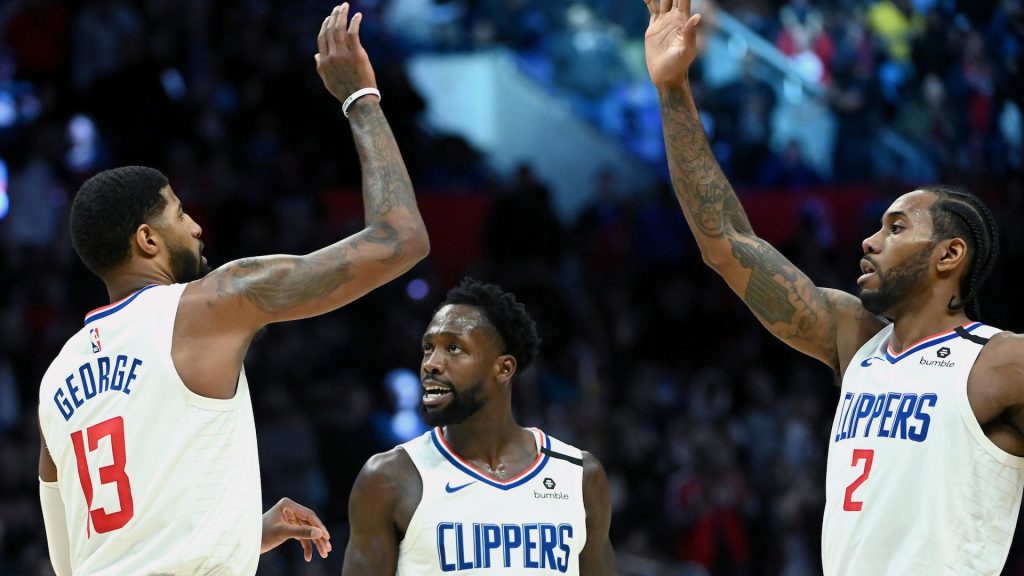
My Answer
So back to the original question posed: Will the Clippers’ offense still be effective in the playoffs, or is it doomed to fail?
Well, all offenses become less effective during the playoffs in some capacity, since they’re only facing the best defenses. But I think the Clippers will deal with that drop-off better than other teams will. When defenses tighten and adapt in the post-season, those other teams will be taken out of their element and either be stuck taking mid-range shots that they rarely shoot, or they’ll force the issue trying to get to their “comfort zone,” ultimately settling for a heavily-contested 3 or off-balance hook shot.
The Clippers, on the other hand, will always be willing and able to take those mid-range shots, since they’ve made the entire court their comfort zone while remaining a top 3 offense. Even if they’re slightly less efficient shots, they’re familiar shots that allow the team to stay in an offensive rhythm.
I think that’s why even during big moments of marquee games this year, the Clippers have never looked rattled. The same could not be said for the Lob City squads. And perhaps that’s why, for the first time in a while, I have no anxiety or apprehension as the most versatile Clippers squad ever assembled heads into the playoffs to contend for a title. It’s not that I feel like this team is guaranteed to win it all or anything that definitive, but rather that if this team loses, it will have been on their terms. And for a Clipper fan, with the history of playoff letdowns that we’ve had to go through, that’s one hell of a feeling.
